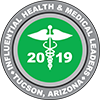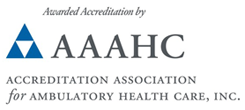A torn meniscus is an injury to the cartilage in the knee joint that cushions and stabilizes the area between the thighbone and shinbone. It often occurs due to sudden twisting motions, pivoting, or heavy weightbearing activities, making it common among athletes. Aging can also lead to degenerative meniscus tears, where the cartilage weakens over time. Symptoms of a torn meniscus include localized pain, swelling, stiffness, a catching or locking sensation in the knee, and difficulty
moving the joint fully.
Pain management for a torn meniscus focuses on reducing inflammation and discomfort while promoting healing. Initial treatments often include rest, ice, compression, and elevation (RICE), along with over-the-counter nonsteroidal anti-inflammatory drugs (NSAIDs) like ibuprofen or naproxen. Physical therapy can strengthen surrounding muscles, reduce stress on the joint, and improve mobility, which helps alleviate pain. In some cases, corticosteroid injections may be used to provide temporary relief from severe pain and inflammation. For patients with persistent pain despite conservative treatments, surgical options like meniscus repair or partial removal may be considered, followed by structured rehabilitation to restore function and reduce discomfort.







